Read more
Manufacturing AI content
How AI Demand Forecasting is transforming stock management and order fulfilment
With markets becoming increasingly unpredictable, AI-driven demand forecasting and inventory optimisation are helping to increase agility and resilience.
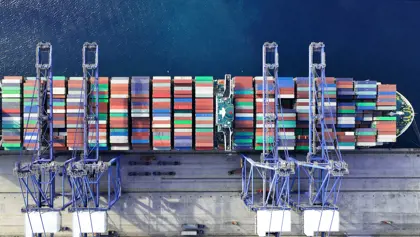
What if your customers prefer to watch content via an online streaming platform rather than deal with the inconveniences of physical media? What if the rapid evolution of touchscreens and apps allows competitors to dominate your customers’ attention? What if your source of a product-critical component disappears overnight?
Failing to ask what-if questions like these led to the downfall of Blockbuster Video, Blackberry dramatically scaling back its presence in the smartphone industry, and Sony’s inability to meet demand for its highly-anticipated PlayStation 5.
The ability to ask critical questions, while always important, has become essential for businesses across industries. The disappearance of Blockbuster, Sony’s supply chain woes and Blackberry’s struggle to remain relevant are stark reminders of what happens when organisations fail to anticipate and respond to market changes effectively.
Yet, keeping up with evolving expectations, supply chain disruptions, technological advancements and emerging competitors has never been harder. Thankfully, the integration of AI demand forecasting technologies into supply chain management is reshaping how manufacturers forecast demand, manage stock and fulfill orders with precision.
How AI Demand Forecasting is Revolutionising Supply Chain Management
Traditional demand forecasting and stock management relied on historical data, manual analysis and reactive decision-making, leading to inefficiencies and missed opportunities. While these methods provide some understanding, they fall short of capturing the complexities and volatility of the modern business landscape.
In contrast, AI technologies, powered by advanced algorithms and data-driven insights, enable businesses to adopt predictive models that adapt to real-time market dynamics. AI’s advanced analytical capabilities enable it to examine vast amounts of structured and unstructured data with ease, including sales data, market trends and even external factors like weather patterns.
By harnessing AI to process this information, manufacturers can accurately forecast future demand and optimise inventory levels accordingly. Amazon’s recommendation system is a prime example of AI-driven forecasting and demand planning in action.
The system analyses past purchases, browsing history and user behaviour to predict what products a customer might be interested in, improving sales forecasting while enhancing the customer experience.
Similarly, manufacturers like Proctor & Gamble are reaping the rewards of AI-powered demand planning. By analysing market trends, consumer behaviour, promotional activities and supply chain data, P&G optimises its production schedules, reduces inventory costs and stays agile in responding to shifting demand.
Tangible Benefits of AI-driven Demand Forecasting and Stock Optimisation:
AI-driven forecasts help businesses maintain optimal inventory levels, reducing excess stock while ensuring sufficient products are available when needed.
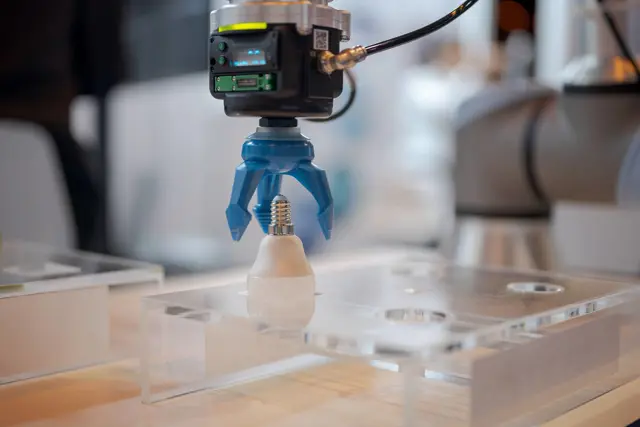
By avoiding overstocking and stockouts, manufacturers can minimise carrying costs associated with excess inventory, having to sell perishable goods at a discount or missed sales opportunities.

AI enables manufacturers to respond swiftly to market changes, demand fluctuations and supply chain disruptions, ensuring a more resilient and agile operation.

Efficiently getting products into the hands of buyers is another area where AI shines. Companies leveraging AI-driven fulfilment can offer faster delivery times, higher order accuracy and optimised delivery routes – factors that are increasingly vital in today’s competitive marketplace.
How AI Anticipates and Adapts to Change
Traditional fulfilment methods, like demand forecasting, relied on manual processes, static information and algorithms based on fixed rules. AI-powered route optimisation is far more proactive, making dynamic route changes based on live data such as traffic congestion, accidents, road closures and weather conditions.
The ability to make dynamic changes is crucial when facing sudden shocks to the supply chain when quick decisions are needed. Such events are becoming more common, with the recent collapse of the Francis Scott Key Bridge in Baltimore, Maryland, just one example.
AI algorithms are particularly good at spotting patterns, links and cause-and-effect relationships that human analysts might miss. Combining these strengths with predictive analytics and machine learning allows AI to anticipate potential disruptions, market shifts and demand fluctuations based on feedback loops, performance metrics and real-world outcomes.
Furthermore, AI’s ability to continuously learn and adapt not only leads to improved forecasting but also enables the technology to simulate complex scenarios with multiple variables, constraints and objectives.
For instance, AI models can recommend route changes accounting for delivery time windows, vehicle capacities, customer priorities and cost efficiencies. Traditional forecasting methods struggle to handle such complexity and can’t make dynamic suggestions, leading to suboptimal routes and potential delays.
AI-driven route optimisation becomes yet more powerful by integrating vehicle telematics systems and IoT devices like RFID tags and sensors. These systems provide additional real-time data, such as considering fuel efficiency, payload capacity, driver behaviour, safety standards and traffic conditions, which AI algorithms use to further refine routes.
By spotting disruptions, anticipating delays and optimising resource use, AI is transforming route optimisation through dynamic rerouting for efficient and cost-effective deliveries. Once you can achieve that level of insight and optimisation for a single truck, the next step is to develop a digital twin for your entire supply chain.
How AI Elevates Digital Twins to New Heights
Combining AI with digital twin technology takes demand forecasting and fulfilment to a new level of sophistication and accuracy. Digital twins create virtual replicas of physical assets, processes or systems and mirror what happens in the real world.
When applied to supply chain management, digital twins enable manufacturers to create detailed simulations of their entire supply chain, from sourcing through production to distribution and beyond.
Creating a digital twin of a supply chain begins with a robust data foundation. Manufacturers must gather and integrate data from multiple sources within the supply chain, including production plants, warehouses, transportation hubs, suppliers and market demand signals.
The good news is that
many organisations already collect operational metrics, inventory levels, supplier performance, customer orders and market trends. All that’s needed is to unify it.
From this foundation, advanced modelling techniques can create a digital replica of every physical and operational asset within the supply chain network. This might include mapping production processes, inventory flows, distribution routes, storage locations, demand patterns, lead times and service agreements. By continuously receiving and updating data from the actual operations, the digital twin reflects the current state of the supply chain. With data integration, virtual modelling and real-time sync in place, the digital twin can simulate ‘what if’ scenarios to help manufacturers evaluate the impact on their key performance indicators (KPIs) and identify effective strategies to avoid or minimise disruption.

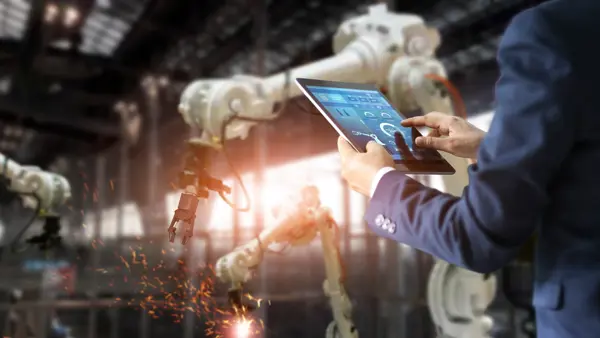
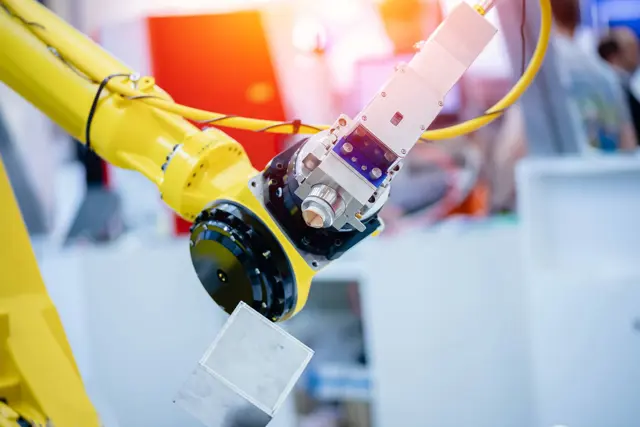

Smart Factory of the Future Expert View: The Benefits of Digital Twins
A digital twin is a virtual/digital replica of physical objects such as devices, people, processes, or systems that help businesses make model-driven decisions.
While it’s possible to create a digital twin without AI, leveraging AI greatly increases its functionality and value. In essence, AI enables a digital twin to move beyond descriptive and diagnostic analytics (understanding what happened and why) to predictive and prescriptive analytics (predicting what will happen and recommending actions). This level of insight and automation is instrumental in addressing the complexities, uncertainties and dynamics of modern supply chain management.
AI systems are driving strategic insights, operational efficiencies and competitive advantages across demand planning, stock management and demand fulfilment. As trade becomes more dynamic and interconnected, AI’s role in elevating supply chain management is not a question of if but when. Many are already reaping the benefits, as the following case studies demonstrate.
Three Real-World Examples of AI-Driven Demand Planning Transforming Supply Chain Management
FutureTech specialises in high-tech component production and operates a complex, global supply chain. The company is leveraging Microsoft Copilot AI for Dynamics 365 Supply Chain Management to generate precise demand forecasts using real-time data and advanced analytics.
Shortly before a public holiday, Copilot recognised an unexpected increase in demand for a certain electronic part. The production planners reacted immediately, adjusted orders and increased the production rate. Thanks to Copilot, FutureTech avoided bottlenecks, optimised inventory turnover and ensured customer satisfaction through on-time deliveries.
Copilot is also helping prevent potential production stoppages at FutureTech. When a supply chain manager discovered a potential delay with a key supplier in Asia, Copilot quickly analysed alternative suppliers and assessed their impact on costs and delivery times. Within a short time, Copilot simulated various scenarios and recommended a reliable partner in Europe, ensuring uninterrupted operations.
How exactly is AI transforming logistics?
It’s a question that DHL is constantly exploring and trialling, to deliver the best service to its customers. Through extensive work with forecasting and prediction models, DHL now knows with 90% to 95% accuracy when shipments will arrive at a specific facility and use that information to plan courier routes.
How exactly is AI transforming logistics? It’s a question which DHL is constantly exploring and trialling, to deliver the best service to its customers. Through extensive work with forecasting and prediction models, DHL now knows with 90% to 95% accuracy when shipments will arrive at a specific facility and use that information to plan courier routes.
Once packages are loaded onto the delivery vehicle, AI-powered software further optimises the route. In just a few seconds, it can take a route with 120 stops and order the sequence based on parameters such as a delivery that must reach a customer before 9:00 am. This smarter route planning translates to faster deliveries, reduced travel time per stop and lower fuel consumption.
AI’s potential in last-mile delivery is endless, says DHL, noting that automation and machine learning have the potential to optimise every step of logistics, with the technology continuously improving and adapting to meet evolving needs.
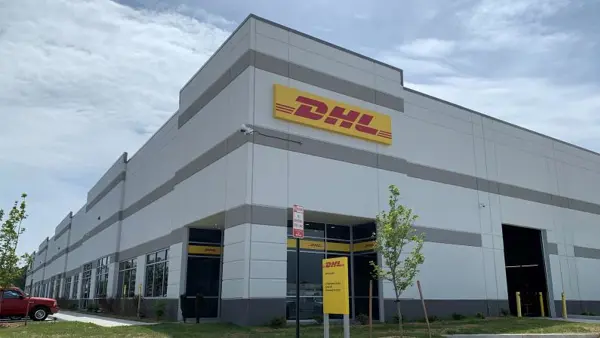

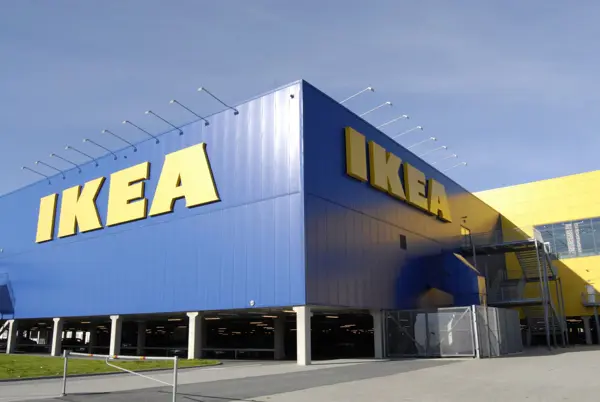

IKEA has developed an advanced AI tool, called Demand Sensing
Demand Sensing uses existing and new data to improve its demand forecasting accuracy. This innovative tool is currently rolled out in Norway and is proving instrumental in helping the iconic furniture brand better understand the demand for its products.
Previously, IKEA made predictions based on past sales and demand patterns. Demand Sensing makes use of up to 200 data sources per product, enabling IKEA to calculate forecasts and predict future demand more effectively. It considers various influencing factors, including shopping preferences during holidays, the influence of seasonal changes on purchase patterns and weather forecasts.
According to IKEA, Demand Sensing has boosted forecast accuracy from 92% to 98% while reducing the need for corrections from 8% to a mere 2%. What sets Demand Sensing apart is its customer-centric approach. Unlike traditional methods that start with global predictions and trickle down to regional and store levels, Demand Sensing places local customer insights at the centre of its forecasting strategy.
This enhanced accuracy translates directly into tangible benefits for IKEA, such as improved product availability for customers and fewer errors and overrides, leading to cost savings and streamlined logistics operations.
Read more
Manufacturing AI content
We, and third parties, use cookies on our website. We use cookies to keep statistics, to save your preferences, but also for marketing purposes (for example, tailoring advertisements). By clicking on 'Settings' you can read more about our cookies and adjust your preferences. By clicking 'Accept all', you agree to the use of all cookies as described in our privacy and cookie policy.
Purpose
This cookie is used to store your preferences regarding cookies. The history is stored in your local storage.
Cookies
Location of Processing
European Union
Technologies Used
Cookies
Expiration date
1 year
Why required?
Required web technologies and cookies make our website technically accessible to and usable for you. This applies to essential base functionalities such as navigation on the website, correct display in your internet browser or requesting your consent. Without these web technologies and cookies our website does not work.
Purpose
These cookies are stored to keep you logged into the website.
Cookies
Location of Processing
European Union
Technologies Used
Cookies
Expiration date
1 year
Why required?
Required web technologies and cookies make our website technically accessible to and usable for you. This applies to essential base functionalities such as navigation on the website, correct display in your internet browser or requesting your consent. Without these web technologies and cookies our website does not work.
Purpose
This cookie is used to submit forms to us in a safe way.
Cookies
Location of Processing
European Union
Technologies Used
Cookies
Expiration date
1 year
Why required?
Required web technologies and cookies make our website technically accessible to and usable for you. This applies to essential base functionalities such as navigation on the website, correct display in your internet browser or requesting your consent. Without these web technologies and cookies our website does not work.
Purpose
This service provided by Google is used to load specific tags (or trackers) based on your preferences and location.
Why required?
This web technology enables us to insert tags based on your preferences. It is required but adheres to your settings and will not load any tags if you do not consent to them.
Purpose
This cookie is used to store your preferences regarding language.
Cookies
Why required?
We use your browser language to determine which language to show on our website. When you change the default language, this cookie makes sure your language preference is persistent.
Purpose
This service is used to track anonymized analytics on the HSO.com application. We find it very important that your privacy is protected. Therefore, we collect and store this data anonymously on our own servers. This cookie helps us collect data from HSO.com so that we can improve the website. Examples of this are: it allows us to track engagement by page, measuring various events like scroll-depth, time on page and clicks.
Cookie
Purpose
With your consent, this website will load Google Analytics to track behavior across the site.
Cookies
Purpose
With your consent, this website will load the Google Advertising tag which enables HSO to report user activity from HSO.com to Google. This enables HSO to track conversions and create remarketing lists based on user activity on HSO.com.
Possible cookies
Please refer to the below page for an updated view of all possible cookies that the Google Ads tag may set.
Cookie information for Google's ad products (safety.google)
Technologies Used
Cookies
Purpose
With your consent, we use IPGeoLocation to retrieve a country code based on your IP address. We use this service to be able to trigger the right web technologies for the right people.
Purpose
With your consent, we use Leadfeeder to identify companies by their IP-addresses. Leadfeeder automatically filters out all users visiting from residential IP addresses and ISPs. All visit data is aggregated on the company level.
Cookies
Purpose
With your consent, this website will load the LinkedIn Insights tag which enables us to see analytical data on website performance, allows us to build audiences, and use retargeting as an advertising technique. Learn more about LinkedIn cookies here.
Cookies
Purpose
With your consent, this website will load the Microsoft Advertising Universal Event Tracking tag which enables HSO to report user activity from HSO.com to Microsoft Advertising. HSO can then create conversion goals to specify which subset of user actions on the website qualify to be counted as conversions. Similarly, HSO can create remarketing lists based on user activity on HSO.com and Microsoft Advertising matches the list definitions with UET logged user activity to put users into those lists.
Cookies
Technologies Used
Cookies
Purpose
With your consent, this website will load the Microsoft Dynamics 365 Marketing tag which enables HSO to score leads based on your level of interaction with the website. The cookie contains no personal information, but does uniquely identify a specific browser on a specific machine. Learn more about Microsoft Dynamics 365 Marketing cookies here.
Cookies
Technologies Used
Cookies
Purpose
With your consent, we use Spotler to measures more extensive recurring website visits based on IP address and draw up a profile of a visitor.
Cookies
Purpose
With your consent, this website will show videos embedded from Vimeo.
Technologies Used
Cookies
Purpose
With your consent, this website will show videos embedded from Youtube.
Cookies
Technologies Used
Cookies
Purpose
With your consent, this website will load the Meta-pixel tag which enables us to see analytical data on website performance, allows us to build audiences, and use retargeting as an advertising technique through platforms owned by Meta, like Facebook and Instagram. Learn more about Facebook cookies here. You can adjust how ads work for you on Facebook here.
Cookies
Purpose
With your consent, we use LeadInfo to identify companies by their IP-addresses. LeadInfo automatically filters out all users visiting from residential IP addresses and ISPs. These cookies are not shared with third parties under any circumstances.
Cookies
Purpose
With your consent, we use TechTarget to identify companies by their IP address(es).
Cookies
Purpose
With your consent, we use this service provided by uMarketingSuite to run A/B tests across the HSO.com application. A/B testing (also called split testing) is comparing two versions of a web page to learn how we can improve your experience.
Purpose
With your consent, we use this service provided by uMarketingSuite to personalize pages and content across the HSO.com application. Personalization helps us to tailor the website to your specific needs, aiming to improve your experience on HSO.com.
Purpose
With your consent, we use ZoomInfo to identify companies by their IP addresses. The data collected helps us understand which companies are visiting our website, enabling us to target sales and marketing efforts more effectively.
Cookies